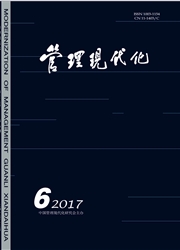

 中文摘要:
中文摘要:
我国电子信息产业具备经济规模优势和成长潜力,但“新常态”下的产业发展存在不确定性。中关村的微观证据表明,电子信息产业内“僵尸企业”的资产占用率正在扩张。通过“供给侧改革”框架,可从技术、治理和扶持3个方面分析影响企业资产扩张的政策因素。基于中关村电子信息企业数据进行分组回归,通过比较解释变量的弹性系数揭示了正常企业与“僵尸企业”的资产扩张脉络,结果表明在供给侧促进企业技术发展、提高融资能力和减税政策有利于产业健康发展,而政府直接补贴和国有资本注入是形成“僵尸企业”的原因。
 英文摘要:
英文摘要:
Chinese electronic information industry has the economic scale advantage and growth potential, but its development is faced with more uncertainty in the new normal. The micro evidence from Zhongguancun suggests that the assets intensity of zombie enterprises in this industry is increasing. Within the framework of reform of the supply front, this paper analyzes the policy impacts of assets expansion, on the standpoints of the technical, governance and supporting relative policies. Basing on grouped regression model of the data from Zhongguancun's enterprises, the elasticity coefficients reveals the assets expansion route of the normal enterprises and the zombie enterprises, and it suggests that policies of developing technology, improving financing and reducing tax in the supply front make contributions to maintaining a healthy development of the industry, however the governmental behaviors of direct subsidies and state-owned capital injection raises the zombie enterprises
 同期刊论文项目
同期刊论文项目
 同项目期刊论文
同项目期刊论文
 期刊信息
期刊信息
